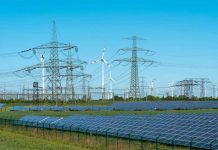World Bank cites the rebound to higher oil prices as well as accelerated growth in telecommunication and financial services.
The Nigerian economy is expected to grow by 2.5 per cent in 2022, up from an estimated 2.4 per cent growth in 2021, the World Bank has said.
The World Bank, in its January 2022 Global Economic Prospects report published Tuesday, said Nigeria’s growth is projected to strengthen somewhat to 2.5 per cent in 2022 and 2.8 per cent in 2023.
It cited the rebound to higher oil prices as well as accelerated growth in telecommunication and financial services.
“Activity in service sectors is expected to firm as well, particularly in telecommunications and financial services.”
However, it said the reversal of pandemic-induced income and employment losses is expected to be slow, this, along with high food prices, restrains a faster recovery in domestic demand.
“New threats from COVID-19 variants and a rise in inflation, debt, and income inequality could endanger the recovery in emerging and developing economies,” the report said.
It further explained that activity in the non-oil economy will remain curbed by high levels of violence and social unrest in parts of the country as well as the threat of fresh COVID-19 flare-ups.
The bank also predicted that per capita income is expected to be lower in 2022 than a decade ago in countries in Angola, Nigeria, and South Africa.
“The pandemic has reversed at least a decade of gains, in per capita income in some countries in almost a third of the region’s economies, including Angola, Nigeria, and South Africa, per capita incomes, are forecast to be lower in 2022 than a decade ago.
“After barely increasing last year, per capita incomes are projected to recover only at a subdued pace, rising 1.1 per cent a year in 2022-23, leaving them almost 2 per cent below 2019 levels.
According to the report, global growth is estimated to have surged to 5.5 percent in 2021—its strongest post-recession pace in 80 years, as a relaxation of pandemic-related lockdowns in many countries helped boost demand.
Growth in advanced economies is forecast to decelerate from 5 percent in 2021 to 3.8 percent in 2022 as the unwinding of pent-up demand only partly cushions a pronounced withdrawal of fiscal policy support. Growth is projected to moderate further in 2023 to 2.3 percent as pent-up demand is exhausted
Moreover, emerging market and developing economies (EMDEs) are experiencing a
weaker recovery compared to advanced economies, owing to slower vaccination
progress, more muted policy support, and more pronounced scarring
effects from the pandemic.
After surprising to the upside in 2021, global inflation is expected to remain above its pre-pandemic rate this year. Investment is expected to be sharply more subdued in EMDEs than in advanced economies.
In 2023, per capita incomes in nearly 40 percent of EMDEs will remain below their 2019 levels. Omicron-related economic disruptions could substantially reduce growth in 2022.
“As the world enters the third year of the COVID-19 crisis, economic developments have been both encouraging and troubling, clouded by many risks and considerable uncertainty,” the president of the World Bank Group, David Malpass, said in the forward of the report.
“The good news is that output in many countries rebounded in 2021 after a sharp decline in 2020.
“Advanced economies and many middle-income countries have reached substantial vaccination rates. International trade has picked up, and high commodity prices are benefiting many developing countries.
Global goods trade has recovered swiftly, driven by a rotation of demand
toward trade-intensive manufactured goods, as suggested by the close
movement of global trade and industrial production. Incoming data
suggest that significant strains on supply chains may be easing slightly.
After reaching 9.5 percent in 2021, global trade is expected to slow to 5.8 percent in 2022 and to 4.7 percent in 2023, as demand moderates.
“Domestic financial crises and foreign debt restructurings have been less frequent than might have been expected in a time of severe global shocks.
“Yet, for many developing countries, progress toward recovery has been hampered by daunting challenges,” Mr Malpass said.
He added that macroeconomic imbalances have reached unprecedented proportions.
He said government spending, deficits, and debt in several advanced economies have reached record highs relative to GDP.
“Spending in developing countries surged to support economic activity during the crisis, but many countries are now facing record levels of external and domestic debt.
“Adding to these debt-related risks is the potential for higher interest rates, it is difficult to predict how rapidly interest rates will rise as advanced economies slow down their expansion in monetary policies.
“With fiscal and monetary policy in uncharted territory, the implications for exchange rates, inflation, debt sustainability, and economic growth are unlikely to be favorable for developing countries,” he said.
According to the report emerging economies growth rebounded to an estimated 6.3 percent in 2021 but is projected to decelerate to 4.6 percent in 2022, as macroeconomic policy support is withdrawn and external demand moderates. Higher energy prices are expected to shift growth momentum from energy importers to exporters. Per capita income growth is expected to trail that of advanced economies in 70 percent of EMDEs over the forecast horizon.

























